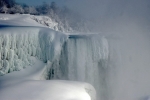Hi,
I had a home sleep screener, I'm trying to figure out what the graph means. It's given me a AHI of 24 but a lot of the time when it's labeled a apnea I can see breaths. I was wondering if anyone could look and tell me what they think.
Is it normal to me breathing shallow then take random deep breaths, is this indicative of an arousal?
I am guessing these would be discarded. I can't understand why they have been marked, although it does seem to line up with desaturations.
Is it normal for breathing to be erratic?
Thanks for any help
http://imgur.com/8xXZRlC
http://imgur.com/iLXnid2
http://imgur.com/iEqaPPC
http://imgur.com/zwiijLF
http://imgur.com/wcMKNu7
http://imgur.com/18F8t5k
Home Sleep study results
Re: Home Sleep study results
Thanks thats very helpful. Reading up but couldnt find enough info.
Re: Home Sleep study results
The images you posted don't show the labels on the graphs, nor do they show the scales. While the ones that are clearly showing the flow rate are somewhat understandable, the one at http://imgur.com/iEqaPPC is meaningless without knowing which graph is what, the scale for the graph, and what the time scale is. I assume that the top graph is the O2 concentration graph (often labeled SaO2) and the bottom one is the heart rate. But the others? Who knows.Zackio wrote:Hi,
I had a home sleep screener, I'm trying to figure out what the graph means.
Again, I'm speculating here. The areas in pink are what's being flagged as sleep disordered breathing of some sort I would suppose. One graph. Two of the graphs also have chunks of the airflow shaded in gray. Was there any key for interpreting the meaning of the pink and gray shading?It's given me a AHI of 24 but a lot of the time when it's labeled a apnea I can see breaths. I was wondering if anyone could look and tell me what they think.
One thing that comes to mind is that some of these areas might be hypopneas rather than apneas. Depending on what definition of "hypopnea" the folks that make the test use, the flow rate has to drop by either 30% or 50% for a hypopnea to be scored. A lot of the shaded areas appear to my eyes to meet those standards.
That is the hallmark for either a "hypopnea with arousal" or a "respiratory effort related arousal (RERA)". Your sleep breathing gets shallow enough for your brain to get worried about the O2, and it wakes you up enough to restart the breathing. The deep breaths that follow a short period of shallow breathing are "recovery breaths.Is it normal to me breathing shallow then take random deep breaths, is this indicative of an arousal?
I am guessing these would be discarded. I can't understand why they have been marked, although it does seem to line up with desaturations.
And the fact that they match up with the desats is further evidence those are real, sleep disordered breathing events (apneas, hypopneas, or RERAs). So these things would NOT be discarded as "bad data" or "you were awake so it doesn't count."
No. Normal sleep breathing is exceptionally regular. But untreated sleep disordered breathing IS very erratic.Is it normal for breathing to be erratic?
Just to give you an idea of what really good sleep breathing looks like, here's a three minute long snippet of my treated sleep breathing when everything is fine and dandy:

When sleep breathing is normal it looks like this for long periods of time---as in 20 or 30 minutes at a time with a few small irregularities (often spontaneous, non-respiratory related arousals) mixed in here and there.
_________________
| Machine: DreamStation BiPAP® Auto Machine |
| Mask: Swift™ FX Nasal Pillow CPAP Mask with Headgear |
| Additional Comments: PR System DreamStation and Humidifier. Max IPAP = 9, Min EPAP=4, Rise time setting = 3, minPS = 3, maxPS=5 |
Re: Home Sleep study results
Thanks robysue. I should have included more information. The pink area's is apnea flagging, grey areas are hypopnea flagging. But as you pointed out, they seem more meet the criteria of a hypopnea then of an apnea.
I feel, with my limited knowledge that much of the apnea flagging should really be flagged as hypopnea. Considering it doesn't look like a complete stopping of breathing.
Thanks very much for looking at my graphs and answering my questions, I like to understand what's going on.
I feel, with my limited knowledge that much of the apnea flagging should really be flagged as hypopnea. Considering it doesn't look like a complete stopping of breathing.
Thanks very much for looking at my graphs and answering my questions, I like to understand what's going on.










